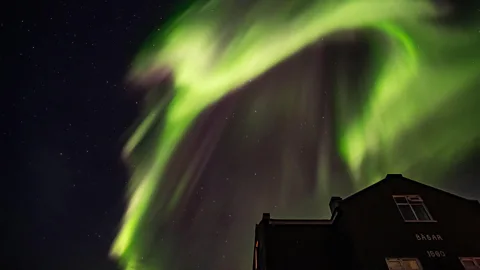Grímsey: The Arctic island with 20 people and one million birds
Set 40km off Iceland’s northern coast, Grímsey is a rugged, windswept island that offers a glimpse into one of Europe’s most remote settlements, surrounded by thriving seabird populations.
Even on a sunny late-August day, Grímsey’s relentless wind pierced through our layers, making us feel as if one strong gust could sweep us off the map. My husband and I arrived on its dramatic shores armed with wooden walking sticks—not just for balance but to guard against the notorious Arctic terns that dive at tourists venturing too close to their nests. As we explored the island’s basalt cliffs, a few puffins lingered, waiting for their April return in full force.

This 6.5-sq-km island, Iceland’s northernmost inhabited point, is the only part of the country within the Arctic Circle. Remote and raw, Grímsey represents Iceland at its most untamed and enchanting.
In the past, Grímsey was accessible only by small boats delivering letters twice a year. Today, 20-minute flights from Akureyri or three-hour ferries from Dalvík bring visitors eager to experience this isolated haven. Alongside its tiny population, the island hosts an impressive array of wildlife, including puffins, kittiwakes, razorbills, and Icelandic horses. In fact, seabirds here outnumber residents by 50,000 to one.

“You won’t believe it, but only 20 of us live here year-round,” shared Halla Ingolfsdottir, a local tour guide and owner of Arctic Trip. Originally from Reykjavík, Halla moved to Grímsey after falling in love—not with a person but with the island itself. “Every season here is special,” she said, describing the Northern Lights, endless winter storms, and the vibrant return of light and birds in spring.
Running her nine-room guesthouse, Halla balances many roles, including monitoring the island’s lone diesel generator that powers Grímsey, which operates off Iceland’s national grid. “People always ask if I get bored, but there’s so much to do!” she laughed.

Grímsey’s busiest months, from April to August, attract visitors keen on birdwatching and experiencing the island’s unique geography. Guided tours showcase puffins and other seabirds, while the settlement of Sandvík offers a small but charming community hub, complete with guesthouses, a cafe, a school-turned-community-center, and even a tiny grocery store.

The island’s history is steeped in legend. It’s said that Grímsey is named after Grimur, a Norse settler, and was once deemed too valuable to relinquish due to its abundant resources. Over centuries, it has weathered population challenges, harsh winters, and fishing dangers, yet its community remains resilient and proud.
Today, Grímsey is celebrated for its Arctic Circle monuments. The Orbis et Globus concrete sphere, installed in 2017, marks the line where the Arctic Circle and Grímsey meet—a line that shifts annually due to Earth’s axial tilt. By 2047, the island will no longer fall within the Arctic Circle, and plans are already in place to ceremonially roll the sphere into the sea.

During polar nights, when the island plunges into months of darkness, the locals bring their own light. “We start decorating for Christmas early, and it becomes a little Christmas town,” Halla shared.
Looking to the future, Grímsey is planning new developments, including retreats for writers and artists. Yet, the island’s residents are clear—they don’t seek mass tourism. “What makes Grímsey special is its intimacy,” Halla said. “It’s a place where community and nature come together in a way you rarely find.”

Our time on Grímsey, though brief, left us with a deep appreciation for its rugged beauty and tight-knit community. It’s the kind of place that stays with you, calling you back for more.